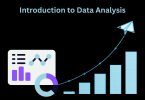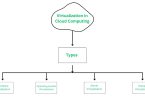Introduction
The intersection of artificial intelligence (AI) and agriculture has given rise to a revolutionary concept known as precision agriculture. This innovative approach combines cutting-edge technologies with traditional farming practices, allowing farmers to optimize their resources, increase yields, and enhance sustainability. In this article, we delve into the realm of AI-driven precision agriculture, exploring its applications, benefits, and the transformative potential it holds for modern farming techniques.
The Essence of Precision Agriculture:
Precision agriculture is a paradigm shift from conventional farming methods that rely on uniform treatments across entire fields. It involves the utilization of AI and various technologies to tailor agricultural practices to the specific needs of different areas within a field. By doing so, farmers can optimize the use of resources such as water, fertilizers, and pesticides, minimizing waste and environmental impact.
AI’s Key Role in Precision Agriculture:
Data Collection and Analysis:
AI-powered sensors, drones, and satellites collect vast amounts of data from fields. This data includes information about soil composition, moisture levels, temperature variations, and crop health. AI algorithms process and analyze this data, generating actionable insights that help farmers make informed decisions.
Decision Support Systems:
AI-driven decision support systems offer real-time guidance to farmers. These systems take into account factors such as weather conditions, soil quality, and historical data to recommend optimal planting times, irrigation schedules, and nutrient application rates.
Predictive Modeling:
AI can predict various agricultural phenomena, including disease outbreaks, pest infestations, and crop yields. By analyzing historical data and considering current conditions, AI can forecast potential challenges, enabling farmers to proactively address them.
Variable Rate Technology:
AI enables the implementation of variable rate technology, where inputs like fertilizers and pesticides are applied at precise rates based on the specific needs of different areas in a field. This approach maximizes effectiveness while minimizing environmental impact.
Applications and Benefits of AI-Driven Precision Agriculture:
Site-Specific Management:
Precision agriculture allows farmers to identify variability in their fields and treat each area accordingly. This targeted approach leads to better resource allocation, reduced input costs, and improved yields.
Water Management:
AI can assess soil moisture levels and weather patterns to optimize irrigation practices. This not only conserves water but also prevents overwatering, which can lead to waterlogging and decreased plant health.
Crop Health Monitoring:
AI-powered imaging systems can detect early signs of diseases, pests, and nutrient deficiencies in crops. This early detection facilitates timely interventions, reducing the need for excessive pesticide use and promoting sustainable practices.
Economic Efficiency:
By reducing wastage of resources and increasing yields, precision agriculture enhances the economic viability of farming operations. It also allows farmers to make well-informed decisions regarding crop choices and market strategies.
Challenges and Future Prospects:
While the potential of AI-driven precision agriculture is immense, certain challenges must be addressed. These include the initial costs associated with implementing AI technologies, the need for specialized training for farmers, and concerns about data privacy and ownership. Furthermore, bridging the digital divide to ensure that small-scale farmers in developing regions can also benefit from these advancements is a priority.
Looking ahead, the future of AI-driven precision agriculture is promising. As AI algorithms become more sophisticated and adaptable, they will better cater to the complexities of different farming systems and regional conditions. Additionally, the integration of AI with other emerging technologies, such as blockchain and the Internet of Things (IoT), could further enhance data accuracy, transparency, and traceability in agricultural supply chains.
Conclusion:
AI-driven precision agriculture marks a pivotal moment in the evolution of farming techniques. By leveraging the power of AI to analyze data, make predictions, and optimize resource usage, farmers can achieve optimal results in terms of productivity, sustainability, and economic viability. The marriage of technology and agriculture not only addresses the challenges posed by a growing global population and changing climate but also paves the way for a more efficient and resilient agricultural sector. As precision agriculture continues to evolve, its transformative impact on modern farming practices is poised to shape the future of food production for generations to come.






Leave a Comment